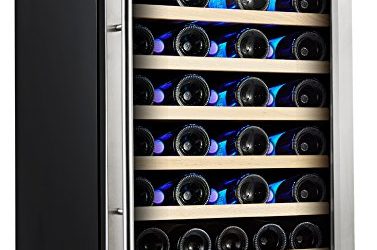Life after Rudy: Looking ahead

By Geordie Clarke / Contributing Editor
It took nearly two years, but in a trial that lasted barely a fortnight in December 2013, Rudy Kurniawan was found guilty in a US federal court of counterfeiting wine and defrauding a lender. Kurniawan was convicted on one count of wire and one count of postal fraud, each of which bring up to 20 years in prison. He will be sentenced on 24 April 2014.
Just one day after Kurniawan was given his guilty verdict and far away from any media scrum, Mohammed Arif, a shopkeeper in Glenrothes, Scotland, was sentenced for selling 64 fake bottles of Blossom Hill from his Costcutter outlet. Total fine: £7,500.
The contrast between these two convictions is significant (Arif was not the person who created the counterfeit Blossom Hill, for starters), but it reminds us of one pervading fact: fake wine is being sold at all points in the market, whether for £5 a bottle or £50,000. It would foolish, in other words, to conclude that only those wealthy enough to afford fine wine sold at auction are being defrauded.
As we start 2014, Kurniawan’s guilty verdict – and its potential for positive change in the fine wine market – is a reason to feel cautiously optimistic for the future. Of course, if your name happens to be Rudy Kurniawan, this year is not likely to be much better than the last.
For Kurniawan, the next step is to appeal against the conviction. While the Indonesian citizen’s defence team continues with its fight, one wonders about his prospects for success. Despite arguing that he was merely a minor player in a wider world of fakes and forgeries, Kurniawan’s rare Burgundy and Bordeaux wines earned millions at auction – and it is believed most of them were counterfeit. If he was a small cog in a bigger machine, then that machine must be colossal.
The problem with Kurniawan’s case is that he did more than simply fake a few wines and rip off millionaires who had money to spare. His scheme to defraud a lender to the tune of $3-million comes with serious consequences and will be difficult to overturn.
It didn’t help Kurniawan’s case that his friends and acquaintances left him hanging to dry. Sensing a threat of serious trouble, ranging from jail time to lawsuits, no one who had dealings with him wanted to be seen to be too friendly.
In the end, only one person agreed to be a witness in his defence at his trial – Cornelius Robert Collins – and this proved to be more of a hindrance than a help. When Collins inspected a collection of Kurniawan’s wines that were seized by police, he said that 80 per cent of them were counterfeit. You know things are bad when your own expert witness doesn’t even believe you.
With so much evidence stacked against him and no friends to support him, it is believed that Kurniawan’s defence will focus on whether the prosecution was right to use items seized during a raid at his home as evidence against him. During that raid, police found what they believed to be a counterfeiting factory. Not only did they find bottles of wine, but they also found corks, bags of labels, stamps and other items that appeared to be used as part of a manufacturing process.
A photo taken inside Kurniawan’s home, submitted as evidence, showed dozens of bottles sitting in wine racks and scattered haphazardly on the floor. On first glance, it could easily have been a photo showing the outcome of an earthquake’s effects on a wine cellar or maybe a room of cast-off bottles from a disorganised wine merchant. But a closer look sets off alarm bells among those in the know. Clearly visible are several full and sealed bottles of Domaine de la Romanee-Conti, Petrus and Chateau Latour among a sea of other brands. It would be impossible to imagine any enthusiast storing wine like this, especially not wine of this pedigree.
If Kurniawan’s defence team is to be successful in their appeal, they will have to overcome a great deal of damning evidence. This could prove insurmountable, although his jail term could be reduced.
For the wine world, the next step is more diligence, more scrutiny and increased security practices to ensure the provenance of valuable wines. While law enforcement will do its part when it can, the only way things will improve for the better is if the market weeds out its less scrupulous operators.





